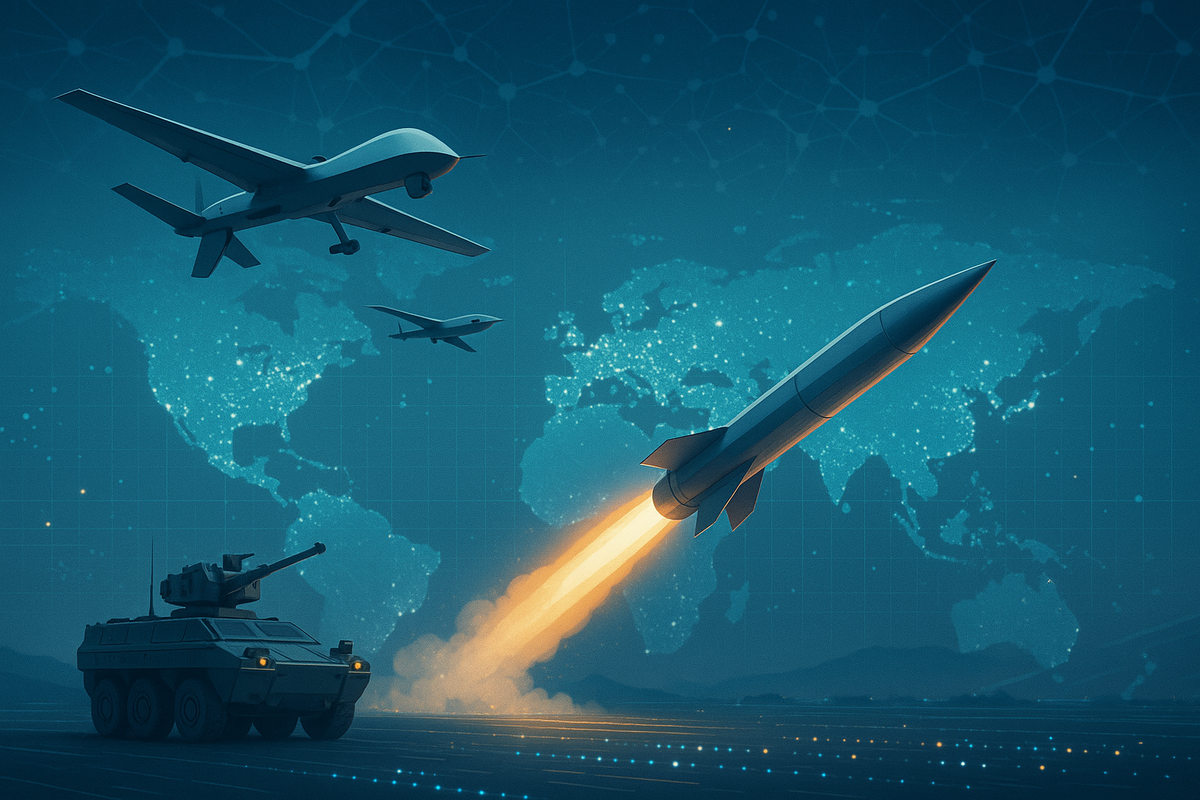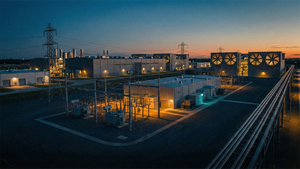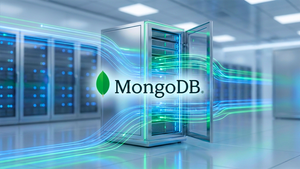
Global defense spending has reached unprecedented levels, driven by escalating geopolitical tensions and a critical need for military modernization. This surge is creating a fertile ground for growth within the defense industry, particularly for companies at the forefront of next-generation technologies such as digital unmanned systems, artificial intelligence (AI), and advanced missile systems. The amplification of growth outlook for defense stocks is undeniable, as nations worldwide prioritize national security and invest heavily in cutting-edge capabilities to deter potential adversaries and enhance their defensive postures.
The current landscape is characterized by a significant pivot in defense priorities, moving away from traditional hardware towards sophisticated, digitally integrated solutions. This shift is not merely about acquiring more equipment but about fundamentally transforming the nature of warfare through technological superiority. Companies innovating in areas like autonomous drones, AI-powered decision-making systems, and hypersonic weapons are poised to capture a substantial share of this expanding market, signaling a new era of defense industry prosperity.
A New Arms Race: Geopolitical Instability Drives Unprecedented Defense Investment
The dramatic increase in global defense spending is a direct consequence of a volatile geopolitical environment. In the last year, global defense spending surged to an unprecedented $2.443 trillion, marking a significant 6.8% increase from the previous year and representing the most pronounced rise since 2009. Other reports indicate that world military expenditure reached $2.718 trillion in 2024, a 9.4% increase from 2023, making it the steepest year-on-year rise since at least the end of the Cold War. This upward trajectory is projected to continue, with estimates suggesting global military expenditure could surpass $3.4 trillion by 2030.
The primary catalyst for this surge is the ongoing conflict in Ukraine, which has prompted European nations to heavily invest in modernizing their militaries and exposed critical inventory reductions within NATO members. Russia itself has increased its military expenditure by 57% since annexing Crimea in 2014. Conflicts in the Middle East, such as the Israel-Hamas war, have also fueled substantial increases in military spending in that region. Furthermore, rising tensions between China, the U.S., and neighboring countries over Taiwan and the South China Sea have accelerated regional military buildups in Asia. This reflects a renewed era of great-power competition, where nations are prioritizing military security often at the expense of other budget areas.
The need for new and advanced technologies stems from the depletion of existing weapon stocks and the imperative to modernize military capabilities. Governments are actively re-baselining their defense industries and stockpiling munitions to address these shortfalls. This shift in defense priorities, away from a counterinsurgency focus towards deterring potential peer adversaries, is driving significant investment in research and development for cutting-edge technologies. Initial market reactions have been overwhelmingly positive for defense contractors, with stock prices reflecting investor confidence in the sustained growth of the sector.
The Vanguard of Defense: Winners and Losers in the New Era of Warfare
The current surge in global defense spending is creating clear winners and losers within the industry, with companies specializing in next-generation technologies poised for significant gains. Traditional defense contractors that have successfully pivoted towards innovation and integrated advanced capabilities are also set to benefit.
Companies heavily invested in Artificial Intelligence (AI) and autonomous systems are at the forefront of this boom. The Pentagon is overseeing over 685 AI-related projects, and global military AI spending is projected to exceed $30 billion by 2028. The U.S. Department of Defense (DoD) requested $1.8 billion for AI in its 2024 budget, and China is investing $1.6 billion annually in AI-enabled systems. The Pentagon's FY2025 budget allocates over $12 billion towards unmanned systems and AI autonomy programs. This directly benefits companies like Lockheed Martin (NYSE: LMT), Northrop Grumman (NYSE: NOC), and Raytheon Technologies (NYSE: RTX), which are actively developing AI-driven unmanned combat aircraft, next-generation counter-drone systems, and AI-powered decision-support tools. Northrop Grumman, for instance, is expanding its use of AI technology for space applications and cognitive spacecraft operations.
The global military drone market is expected to become a $33 billion industry by 2030, making companies like AeroVironment (NASDAQ: AVAV) and Kratos Defense & Security Solutions (NASDAQ: KTOS), which specialize in unmanned aerial vehicles (UAVs) and other autonomous platforms, prime beneficiaries. Furthermore, the increased focus on advanced missile systems, particularly hypersonics, will boost companies like Lockheed Martin, which is a key player in the development of hypersonic weapons. The U.S. Navy plans to integrate Conventional Prompt Strike (CPS) into Zumwalt-class destroyers by FY2025, and the Army and Navy have a joint program for the Long-Range Hypersonic Weapon (LRHW), creating substantial opportunities for contractors involved in these programs. Conversely, companies that fail to adapt to this technological shift and remain reliant on outdated defense solutions may find themselves struggling to secure new contracts and maintain market relevance.
Reshaping the Battlefield: Industry Impact and Broader Implications
The current surge in defense spending and the focus on next-generation technologies represent a fundamental reshaping of the defense industry, with far-reaching implications for competitors, partners, and regulatory bodies. This event fits into a broader trend of increasing militarization and technological competition among global powers, reminiscent of historical arms races but with a distinct emphasis on digital and autonomous capabilities.
The shift towards software, data, and private-sector innovation is gaining strategic importance, rivaling the significance of physical equipment. This means that traditional defense contractors are increasingly partnering with, or acquiring, smaller tech firms and startups that possess specialized expertise in AI, cybersecurity, and advanced analytics. This trend is fostering a more dynamic and collaborative ecosystem within the defense sector, but also raises questions about intellectual property and data security. The influx of private-sector expertise is helping to shorten development cycles and enable rapid prototyping, a significant departure from the multi-decade hardware cycles of the past.
Regulatory and policy implications are also significant. Governments are grappling with the ethical and societal implications of autonomous weapons systems and AI in warfare, leading to ongoing discussions about international regulations and responsible development. The high costs associated with developing and procuring advanced military technologies can strain national defense budgets, potentially leading to difficult choices about resource allocation. Furthermore, the increased reliance on complex digital systems necessitates robust cybersecurity measures, creating a new frontier for defense spending and a heightened risk of cyber warfare. Historical precedents, such as the Cold War arms race, offer some parallels in terms of heightened spending and technological competition, but the current era is uniquely defined by the rapid pace of digital innovation and the pervasive nature of cyber threats.
The Horizon of Defense: What Comes Next
The trajectory of the defense sector, fueled by increased global spending and a relentless pursuit of next-generation technologies, points towards a future defined by advanced capabilities and strategic adaptation. In the short term, we can expect a continued acceleration in research and development, particularly in areas like AI, autonomous systems, and hypersonics. Defense budgets will likely prioritize these cutting-edge technologies, leading to a robust pipeline of new contracts and opportunities for innovative companies.
In the long term, the defense industry will likely see further consolidation as larger players acquire specialized tech firms to bolster their capabilities. We can also anticipate the emergence of entirely new defense paradigms, where human-machine teaming and networked autonomous systems play an even more central role in military operations. This will necessitate significant strategic pivots for defense contractors, requiring them to invest heavily in talent development, agile manufacturing processes, and robust cybersecurity infrastructure. Market opportunities will emerge not only in the development of these technologies but also in their integration, maintenance, and the training of personnel to operate them effectively. Challenges will include managing the ethical implications of advanced AI in warfare, ensuring interoperability between diverse systems, and navigating complex global supply chains. Potential scenarios range from a continued arms race driving rapid technological advancement to international agreements aimed at controlling the proliferation of autonomous weapons.
A New Era of Security: Conclusion
The current surge in global defense spending, driven by geopolitical instability and the imperative for military modernization, marks a pivotal moment for the defense industry. The key takeaway is a fundamental shift in investment priorities towards next-generation technologies, with digital unmanned systems, artificial intelligence, and advanced missile systems leading the charge. This transformation is not merely incremental; it represents a paradigm shift in how nations approach national security and project power.
Moving forward, the market will continue to be shaped by the interplay of technological innovation, geopolitical dynamics, and evolving regulatory frameworks. Investors should closely watch companies that demonstrate a strong commitment to research and development in these critical areas, possess agile manufacturing capabilities, and are adept at forming strategic partnerships. The lasting impact of this era will be a defense landscape characterized by unprecedented technological sophistication, where the ability to innovate and adapt will be paramount for both national security and corporate success. The defense sector is not just growing; it is evolving at an accelerated pace, promising a future where technology will increasingly define the contours of global security.





